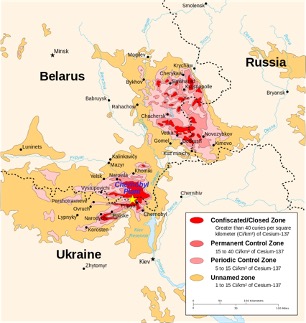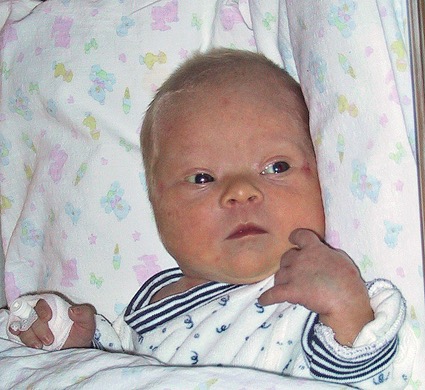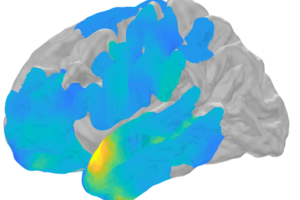
Figure 1: Damage caused to reactor 4 of the Chernobyl plant after the explosion
Source: Wikimedia Commons
Introduction:
The notorious Chernobyl Disaster took place at reactor 4 near the town of Pripyat, Ukraine on the morning of April 26, 1986. According to the National Cancer Institute, the accident caused 5 million people in Belarus, Russia and Ukraine to become exposed to harmful radiation. On a scale of one to ten, it was rated a seven on the International Nuclear Event Scale (INES), which indicates the large extent of the accident’s severity and damage.
The disaster resulted from an explosion due to flaws in the reactor, followed by an open-air reactor fire that contaminated the air with radioactive particles. Tragically, in addition to killing a number of the plant workers on the day of the accident, radioactive particles affected people in the nearby area to the extent that children were born with missing portions of skull until recent years (Akar, 2015). This accident is a clear example of how small mistakes on the behalf of power plant and government officials had a hugely detrimental effect on human life. The goal of this article is to discuss the genetic mutation and birth defects suffered by children as well as long-term mental health effects as a consequence of the Chernobyl disaster.
Background:
There were two main factors that contributed to the explosion: the type of reactor, and the lack of proper precautions taken by workers at the facility. The reactors built at Chernobyl were RBMK (Reactor Bolsho Moshchnosty Kanalny) reactors, which are a type of graphite-moderated nuclear power reactor. They had an unusual design that involved the production of both plutonium and electric power. Furthermore, the reactors had a unique combination of a graphite moderator and water coolant. These components contributed to a high instability of the reactors, and as a consequence, they tended to have uncontrolled nuclear chain reactions which resulted in power outrage and made the reactors lose cooling water (these defects were known before the Chernobyl disaster occurred). These types of reactors was never built by any country outside the USSR because the reactor’s features that were rejected everywhere else (“Chernobyl Accident, 1986”, 2020).
The second key factor leading up to the disaster was human error. Chernobyl workers took improper actions regarding the power plant’s procedures. On the 25th of April, before shutting down operations for the day, the reactor crew at Chernobyl 4 started preparing for a test to determine how long the turbines would spin and supply power to the main pumps which were circulating. Startup took longer than expected due to a chain of technical difficulties, so the workers didn’t attempt the test early on 26th April (“Chernobyl Accident, 1986”,2020). By the time that the operator moved to close down the reactor, the reactor was in an extremely unbalanced condition.
For experienced operators, crisis may have been averted. There was an unprepared operating shift on duty that day, and since there was no mention about the risks of the unstable conditions of the operator in the instructions manual, the workers proceeded with the test. An anomaly in the design of the control rods caused a huge power surge as they were inserted into the reactor and nuclear catastrophe followed.
The power surge caused an enormous increase in heat suddenly, which damaged some of the pressure tubes containing fuel. As a result, the particles in the hot fuel reacted with water and caused a steam explosion, which blew the cover off the top of the reactor, damaging the rest of the tubes, causing a second explosion, and exposing the reactor core to the environment. The fire burned for days, releasing a large amount of radioactive particles into the atmosphere. The Chernobyl plant did not have a protective containment structure which was common in most nuclear power plants elsewhere in the world. Without this protection, radioactive material traveled a long distance through the air (“Chernobyl Accident, 1986”,2020).
Even with the Chernobyl reactor’s incompetent design, the higher authorities could have avoided mass exposure to radiation by alerting government officials and ordering an immediate evacuation. Instead, the Chernobyl plant operators hid the accident from authorities and the local people. As a result, the government started ordering evacuations about 36 hours after the accident. By then, most people had been exposed to radiation.
The following section of this paper will examine how the Chernobyl disaster led to birth defects and impacted mental health. Numerous aspects of fetal development were impacted, and even micro-doses of radiation affected individuals countries away from the disaster site. Understanding the severity of the accident and the damage it caused to the surrounding locality is critical so that proper safety measures can be taken again if a disastrous accident like this occurs in future.

Figure 2: A map showing the spread of radiation from the Chernobyl reactor to neighboring countries
Source: Wikimedia Commons
Impact on Birth Defects:
Much of the fetal damage caused by the Chernobyl disaster involved neural tube defects. In the fetus, the neural tube is an embryonic precursor to the central nervous system. In other words, the baby’s brain, and spinal cord— two of the most important parts of the human body—are formed from the neural tube. Unsurprisingly, any harm to the neural tube can have severe consequences. For instance, anencephaly is a type of neural tube defect in which major portions of the brain and skull are missing in children. Such children typically die right after birth (Akar,2015). Microcephaly is a condition in which the baby’s head is much smaller than it ought to be because the brain remains underdeveloped. Microphthalmia is an abnormality of the eye which develops before birth. Both eyeballs are abnormally small in this condition. In some children the eyeball may appear to be missing completely.
While many cases of neural tube defects were observed in the area surrounding the Chernobyl plant, cases were also found as far out as Turkey, Belarus and Croatia. The Chernobyl Forum predicted that 15 children died of thyroid cancer while a total of 3935 people died in and around Chernobyl due to radiation-induced cancer and leukemia. At the same time, the Chernobyl Forum reported that there were 10,000-200,000 deaths in Belarus, Ukraine and Russia due to radiation exposure. Since 2000, in select regions of Ukraine, birth defects have been monitored (Wertelecki, 2017). According to researchers on this project, significantly higher rates of microcephaly, neural tube defects, and microphthalmia were observed in selected regions of Ukraine (collectively known as Polissia), as compared to adjacent regions (collectively termed non-Polissia). These significantly higher rates were evident particularly in the years 2000–2009 – 14+ years after the disaster occurred.
Although there were no firm conclusions, the scientists answered a lot of questions and helped spur new research. An article published in the British Medical Journal reported that Italy had 100 reported cases of abortion due to radiation-induced birth defects. Similar research on abortion has proceeded in other countries, although data is limited in some places where abortion rates are not well-tracked (e.g. Ukraine, Russia, and Belarus).
Another interesting topic of study was the impact of the disaster on biological sex. Data seems to show that there is a negative relationship between the level of radiation and the number of newborn boys in the Czech Republic (Parazzini, F, et al.,1998). The number of newborn males was fewer in the six eastern regions where radiation levels were strongly increased due to higher rain levels which helped carry the radioactive cloud. In contrast, the number of newborn boys was not reduced in the two western regions where radioactivity levels were much lower. In support of the results mentioned earlier, Peterka, a famous scientist at the Institute of Experimental Medicine, found that no other significant harmful environmental events occurred during 1986 that would cause this effect other than the radiation from the Chernobyl explosion (Peterka, 2017).
The study in question looked at males born in November 1986, who would have been in the third month of prenatal development during the time of increased radiation at the end April 1986 caused by the accident. The third month of prenatal development is very critical because the fetal brain is extremely vulnerable to any damage. Essentially, neurons (the basic cellular units of the brain) need to mature before they migrate to the main area of brain, called the cortex. Because of the effect of radiation during prenatal development, the immature neurons migrated to the wrong parts of the brain, leading to various kinds of disorders.
The effect was so strong in the Czech Republic, a unique and significant decrease in the male birth ratio was found in November 1986 (Peterka, 2017). This is the only time there was a reverse in the sex ratio observed at the whole population level in the Czech Republic (more females than males). The absence of other environment variables along with a missing biological hypothesis led to the conclusion that this mystery can only be explained by the harmful environment caused by the radiation from the Chernobyl accident.
Unfortunately, there were more genetic and birth defects than just neural tube defects. After the Chernobyl accident, there was a reported increase in spontaneous abortions not only in countries directly adjacent to the Ukraine, but also in Finland and Norway. It was also found that Perinatal mortality and trisomy 21 increased in Germany. Presence of Down Syndrome and childhood leukemia were detected in Sweden at the time of the accident (Peterka, 2017). Also, in Hungary, there was an increased incidence of thyroid diseases in children.
Trisomy 21, also known as Down Syndrome, is a genetic disorder which occurs due to a third copy of the 21st chromosome. It results in delayed physical and mental growth in children. In 1987, an elevated number of trisomy 21 cases were reported in Berlin, Germany (Sperling, et. al., 1994). An x-ray of the chest, teeth, and bones were performed on the mothers of these children. It was found that all of the mothers were exposed to the radiation from the radioactive clouds that passed through Berlin nine months after the Chernobyl fallout. Based on the women’s menstrual cycles and ovulating period, it was found that 4 women had conceived during the time of highest exposure in Berlin.
The incidence of Leukemia, a form of blood cancer commonly found in children, was also elevated for children present near the Chernobyl plant during the accident. Studies have shown that there was an increased risk of leukemia along with the presence of leukemia in children who were residents of Pripyat in 1986 (Noshchenko, et. al., 2001)

Figure 3: This is a baby affected by down syndrome
Source: Wikimedia Commons
Impact on Mental Health:
Although the radiation exposure did not affect people’s mental health at first, this accident changed people’s lives in numerous ways. Some developed PTSD as a consequence of the mass-evacuation and leaving their homes behind. Some developed anxiety and depression as a result of a disrupted daily life and loss of social networks. Given these issues, there were numerous studies conducted to monitor the mental health conditions and suicide rates in people who were present during the Chernobyl accident. A study was conducted by Havenaar exactly 6.5 years after the accident to see the long-term mental health effects. It was conducted on two population samples, one from the Gomel region, which is close to the accident site, and one from Tver, 500 miles away from the site, by using a variety of questionnaires which were self-reported and a standardized psychiatric interview. Their study shows that higher levels of emotional imbalance was displayed among the entire adult population, especially women and children under 18 who were in the exposed region (Havenaar, et. al, 2006). This study also found an excessive increase in death rates from suicide among the cleanup workers who were appointed right after the accident, which further shows that this accident caused a lot of emotional turmoil for those involves.
Conclusion and Lasting Impacts:
The Chernobyl accident in 1986 was a tragic event that caused many hardships. Many lives were lost as a direct consequence of the accident, such as firefighters and radiation safety officers who dealt with the emergency. Children as well as emergency and recovery workers in the surrounding area were at especially high risk of suffering from radiation-induced effects. Furthermore, much of the population across Eastern and Central Europe lived in fear of suffering from fatal health consequences due to the radiation from the Chernobyl accident. In response, according to an article by NEI, the government of Soviet Union started implementing certain measures to protect the people over the next few years. These measures included decontaminating settlements exposed to the radiation, treating pasture, and providing non-contaminated fodder to farm animals (“Chernobyl Accident and Its Consequences.”,2019).
Yet despite these efforts, monitoring after the Chernobyl nuclear accident in Ukraine has shown that the high dose radiation exposure was directly linked to women having neural tube defects. Studies have shown that even twenty-four years after the Chernobyl accident, women are still recurringly exposed to low-dose radiation at levels which exceed current recommendations (Dancause, 2010). Clearly, an accident such as this must be prevented from taking place again at all costs.
References
Akar, N. (2015, July 10). Radioactive Fallout and Neural Tube Defects. Egyptian Journal of Medical Human Genetics, vol. 16, no. 4, 5 June 2015, pp. 299–300.
“Chernobyl Accident and Its Consequences.” (2019). Nuclear Energy Institute, 1 May. www.nei.org/resources/fact-sheets/chernobyl-accident-and-its-consequences.
“Chernobyl Accident, 1986.” (2020). World Nuclear Association. Retrieved from https://www.world-nuclear.org/information-library/safety-and-security/safety-of-plants/chernobyl-accident.aspx.
Dancause, K. N., Yevtushok, L., Lapchenko, S., Shumlyansky, I., Shevchenko, G., Wertelecki, W., & Garruto, R. M. (2010). Chronic radiation exposure in the Rivne-Polissia region of Ukraine: Implications for birth defects. American Journal of Human Biology, 22(5), 667-674. doi:10.1002/ajhb.21063
Havenaar, J., , Rumyantzeva, G., Brink, W., Poelijoe, N., Bout, J., Koeter, M. (2006). Long-Term Mental Health Effects of the Chernobyl Disaster: An Epidemiologic Survey in Two Former Soviet Regions. Retrieved January 19, 2021, from https://ajp.psychiatryonline.org/doi/full/10.1176/ajp.154.11.1605
Noshchenko, A., Moysich, K., Bondar, A., Zamostyan, P., Drosdova, V., & Michalek, A. (2001). Patterns of acute leukaemia occurrence among children in the Chernobyl region. Retrieved January 19, 2021, from https://academic.oup.com/ije/article/30/1/125/619052
Parazzini, F., Repetto, F., Formigaro, M., Fasoli, M., & Vecchia, C. (1988). Points: Induced abortions after the Chernobyl accident. Retrieved January 19, 2021, from https://www.bmj.com/content/296/6615/136.2
Peterka, M., Peterková, R., & Likovský, Z. (2007). Chernobyl: Relationship between the number of missing newborn boys and the level of radiation in the Czech regions. Retrieved January 19, 2021, from https://www.ncbi.nlm.nih.gov/pubmed/18087603
Sperling, K., Pelz, J., Wegner, R., Dörries, A., Grüters, A., Mikkelsen, M. (1994). Significant increase in trisomy 21 in Berlin nine months after the Chernobyl reactor accident: Temporal correlation or causal relation? Retrieved January 19, 2021, from https://www.ncbi.nlm.nih.gov/pmc/articles/PMC2540705/?page=3
Wertelecki, Wladimir, et al.(2017). Chornobyl 30 Years Later: Radiation, Pregnancies, and Developmental Anomalies in Rivne, Ukraine. European Journal of Medical Genetics, vol. 60, no. 1, pp. 2–11.
Related Posts
Risk of Death Among Recently Released Inmates
Figure 1: While healthcare inequity is certainly an issue while...
Read MoreThe Future of Wearable Devices
Figure: The colored sections of the brain represent the different...
Read MoreSreya Roy



